The following pictures and text were taken from the Janurary-February 1970 issue of Ties.
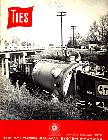



A 2,000-MILE JOURNEY over rail, road and water ended in mid-February for a 325-ton nuclear reactor "vessel" and climaxed an important phase in the construction of Duke Power Company's $700 million Keowee-Toxaway power project in Oconee County, S. C.
The project will consist of three dams, two man made lakes, two hydroelectric stations, one nuclear generation station (at Oconee), and the development of related recreational areas. The nuclear generation station, Duke Power's first, and expected to be the world's largest when completed, will have three nuclear reactor units, with each unit providing steam to power an 88,300-kw turbo-generator. The first unit is expected to be completed in 1971, with units two and three to be ready in 1972 and 1973.
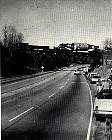
The first nuclear reactor vessel for the station began its 2,000-mile trip from the manufacturer's plant (Babcock & Wilcox) at Mt. Vernon, Ind., by barge down the Ohio and Mississippi Rivers, around Florida, and up the Intercoastal Waterway and the Savannah River to North Augusta, S. C. At North Augusta, the reactor was transferred to truck and then rail for delivery by the Seaboard Coastline to Southern Railway at Anderson, S. C., for movement to Newry, near Seneca, S. C.

|
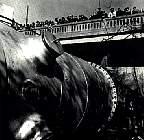
|
The reactor, described by one as "big as a five-story building tilted on its side," stands 41 feet, 9 inches high, with an inside diameter of 14 feet, 3 inches. Because of its large size, planning for its move over Southern got underway many months prior to the actual movement.
Numerous railroad signs and utility poles were moved from along the railroad right-of-way. In some instances, the right-of-way was widened to provide adequate clearance around curves and through cuts. At Anderson, S. C., the rail bed and tracks were lowered approximately three feet to permit passage of the oversize load under a highway bridge. At another place, near North Augusta, a Southern bridge and an industrial spur was jacked up one and one-half feet to permit highway passage of the reactor vessel beneath it. The bridge was then lowered back into normal position.
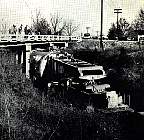
Because of the immensity and uniqueness of the load, a special train was made up for hauling the reactor. The reactor itself traveled between two flat cars that were especially equipped with hydraulic handling devices. These permitted the lifting and lowering of the reactor at either end to prevent it from dragging on the ground when cresting hills and also to raise the reactor for the placing of block and tackle when transferring it from rail to track and back. The remainder of the train included two locomotives, a caboose and an open-top gondola for the carrying of tools, cables, etc.
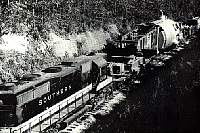
The trip from Anderson to Newry progressed smoothly with the train moving at a restricted speed of from 10 to 12 miles per hour. All along the route traffic stopped to watch the train. Several communities dismissed children from school so they could watch the big show.

The safe delivery of reactor number one served as a trial run for the other two that will follow, one scheduled for later this year and one scheduled for 1972 delivery. The school children can hardly wait.
